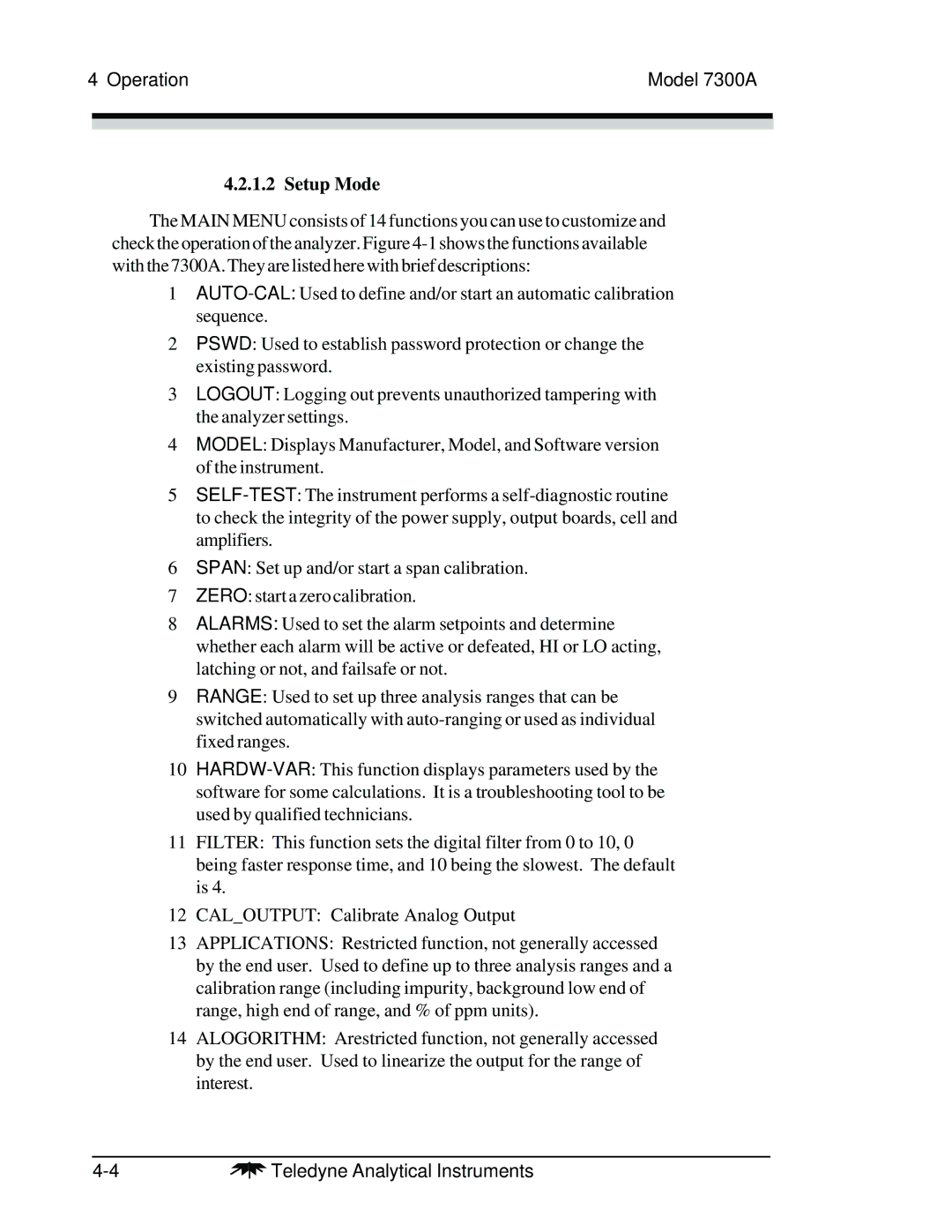4 Operation | Model 7300A | |
|
|
|
|
|
|
|
|
|
4.2.1.2 Setup Mode
The MAIN MENU consists of 14 functions you can use to customize and check the operation of the analyzer. Figure
1
2PSWD: Used to establish password protection or change the existing password.
3LOGOUT: Logging out prevents unauthorized tampering with the analyzer settings.
4MODEL: Displays Manufacturer, Model, and Software version of the instrument.
5
6SPAN: Set up and/or start a span calibration.
7ZERO: start a zero calibration.
8ALARMS: Used to set the alarm setpoints and determine whether each alarm will be active or defeated, HI or LO acting, latching or not, and failsafe or not.
9RANGE: Used to set up three analysis ranges that can be switched automatically with
10
11FILTER: This function sets the digital filter from 0 to 10, 0 being faster response time, and 10 being the slowest. The default is 4.
12CAL_OUTPUT: Calibrate Analog Output
13APPLICATIONS: Restricted function, not generally accessed by the end user. Used to define up to three analysis ranges and a calibration range (including impurity, background low end of range, high end of range, and % of ppm units).
14ALOGORITHM: Arestricted function, not generally accessed by the end user. Used to linearize the output for the range of interest.
Teledyne Analytical Instruments |
